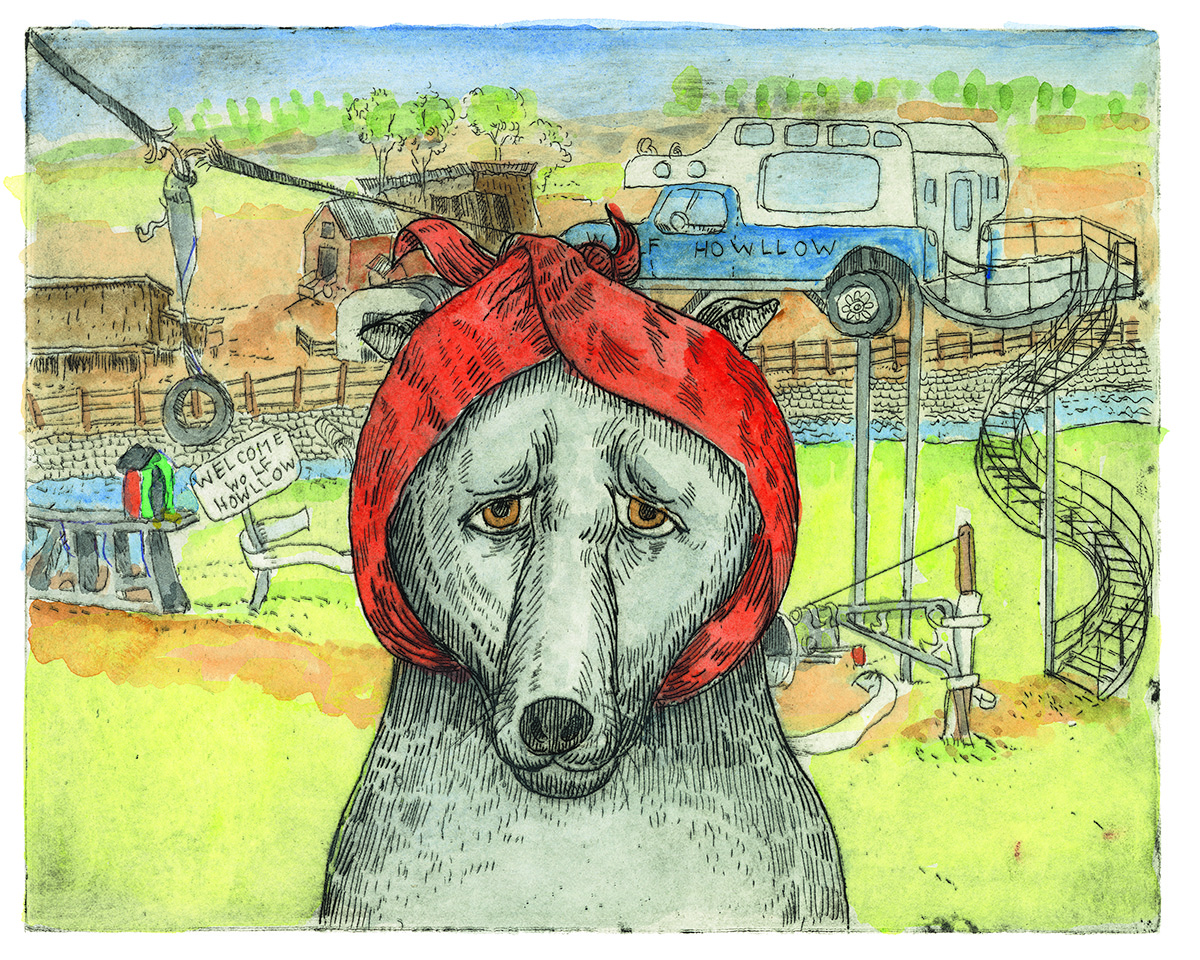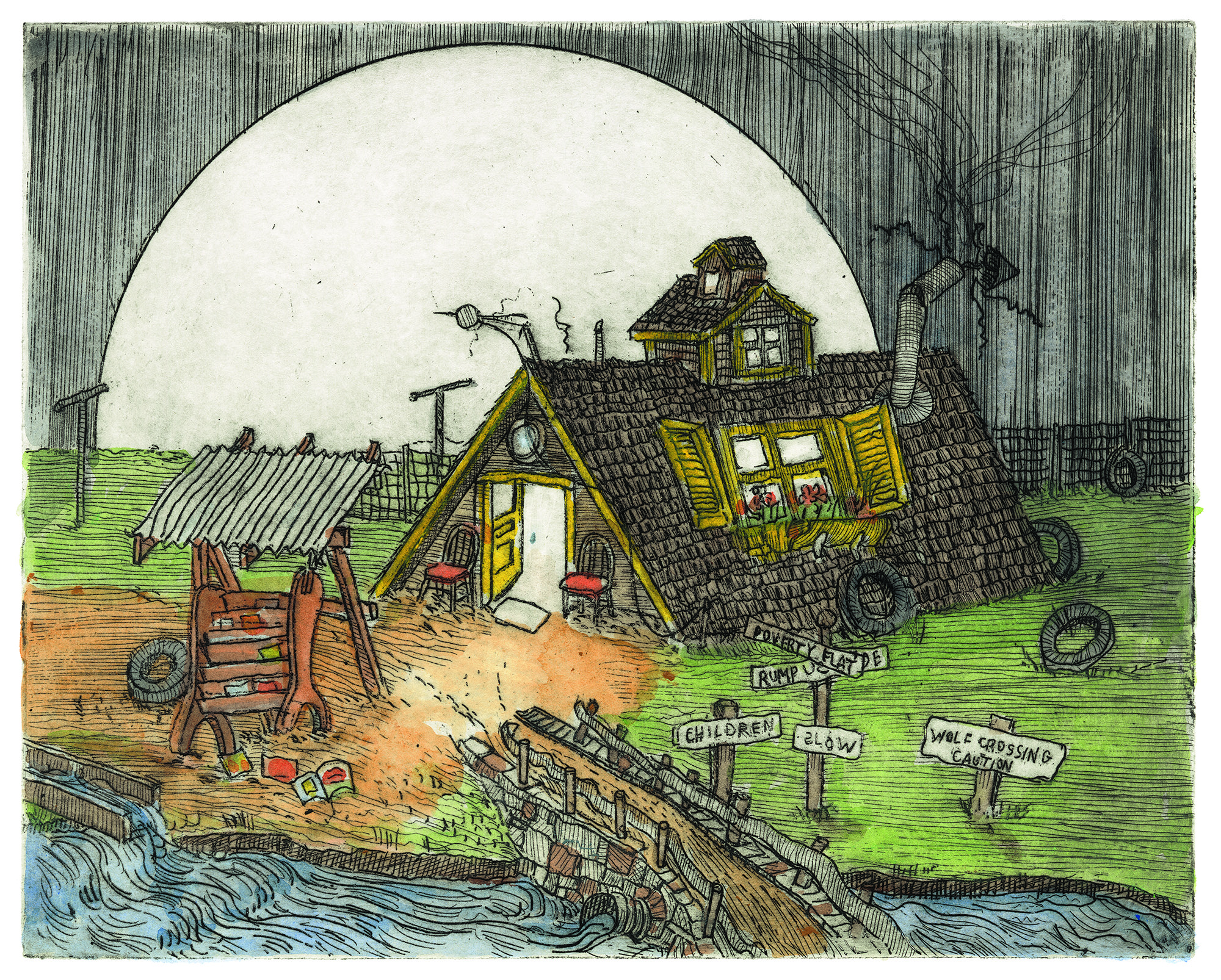The Dubuque Museum of Art holds the complete collection of Arthur Geisert's work. In 2002, through the efforts of then-DUMA Board President, Bob Woodward, the Dubuque Museum of Art began the acquisition of the collection. DuMA became the official repository of his work thanks to the commitment and generosity of the Jack and Mantea Schmid Family and the cooperation of Arthur Geisert and Bonnie Geisert. Geisert has published over 30 books and the collection continues to grow with a new book anticipated for release in 2024.
Biography
Arthur Geisert was born in Dallas, Texas in 1941 and grew up in Los Angeles. He received his Bachelor of Science degree from Concordia University in Nebraska, which later awarded him an honorary doctorate, and his Master of Arts degree from the University of California, Davis. He also studied at the Chouinard Art Institute (later CalArts) and Otis Art Institute (later Otis College of Art and Design) in Los Angeles, and the Art Institute in Chicago. After teaching at Concordia University-Chicago, he moved in the early 1970s to Galena, Illinois, with his wife, Bonnie, and son, Noah, where they built an elaborate three-story home and studio in a defunct rock quarry. Following a divorce in 2007, Geisert bought an old bank building in Bernard, Iowa and converted it into an efficient studio and home. In 2014 he moved to another small Iowa town, Elkader, where he converted the old downtown dry cleaners building on the edge of the Turkey River into a large studio and living space.
Geisert has won numerous awards including The New York Times Best Illustrated Children’s Book Award for Pigs from A to Z (1986), Roman Numerals I to MM (1996), and Ice (2011), and a Boston Globe Horn Book Award and Society of Illustrators Silver Medal for Haystack (2003). His children’s books have been translated into French, German, Latin, Spanish, Japanese, Chinese, and Korean. Even the one-word book Oink (1991) has been translated into six languages. He has had five cartoons published in the New Yorker. His work has been exhibited at the Art Institute of Chicago, San Francisco Museum of Modern Art, The Print Center in Philadelphia, Society of American Graphic Artists, Society of Illustrators Museum of American Illustration, Figge Art Museum, and the Cedar Rapids Museum of Art.


No matter how fantastical, stories by illustrator and printmaker Arthur Geisert maintain an air of possibility and authenticity due, in part, to the inspiration he draws from the people, animals, and landscapes around him. Traveling the back roads of rural Midwestern communities, Geisert discovers material for his art wherever he goes, even right outside his own front door on the main street of a small Iowa town.
Geisert's work focuses heavily on rural life in the Midwest. His illustrations are teaming with farm imagery. His books are more accurately described as picture books since his images are the main narrative mechanisms. Many of Geisert's books have minimal or no text and the story is told solely through pictures, encouraging readers to use their imagination to tell the story.
Geisert is unique as a children's book illustrator who uses the medium of etching, a fine art printing technique. Many laborious steps are involved in the creation of an etching. They include creating a drawing, making a tracing of the drawing, transferring the tracing onto a copper plate coated in a waxy material, using acid to etch the transferred image into the plate, then running the plate through the press several times to create preparatory prints until a final print is achieved. Once Geisert has a complete set of final prints, usually around 40 individual etchings, his work is only half done. Before the new etchings go to the publisher to be reproduced as a book, he spends months hand-coloring each one.